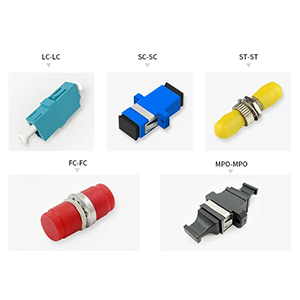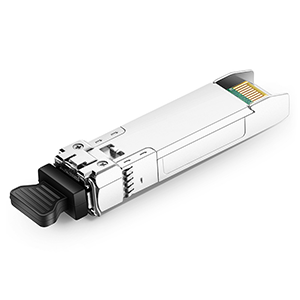I am pleased to introduce you to fiber optic color coding, a coding system used to identify fiber type and function. The purpose of fiber optic color coding is to facilitate identification and differentiation of different types of fiber optics and to ensure proper installation and maintenance. According to relevant standards and specifications, such as TIA-598C and IEC 60793-1, optical fiber color coding adopts a unified set of standards, making the identification of optical fibers simple and accurate.
Fiber color coding follows basic principles, including using different basic colors to identify fiber characteristics, such as red for single-mode fiber, orange for multi-mode fiber, etc. In addition, fiber color coding also follows specific color sequence rules to determine the color sequence of fiber cores and fiber cladding to ensure consistency and easy identification.
Introduction to fiber color code
-
Definition and purpose:
Fiber color coding is a coding system used to identify fiber type and function. Optical fibers usually consist of one or more long, thin glass or plastic fibers used to transmit light signals. To facilitate the identification and differentiation of different types of optical fibers, a fiber color coding system was introduced. It enables users and technicians to quickly identify and differentiate fiber types and functions by assigning a specific color to each type of fiber. Standard specifications:
- TIA-598C: TIA-598C is a standard specification issued by the Telecommunications Industry Association. This specification defines a fiber color coding system, including color identification of single-mode fiber and multi-mode fiber. According to TIA-598C, different types of optical fiber have different color coding, such as single-mode fiber is usually yellow, and multi-mode fiber is usually orange.
- IEC 60793-1: IEC 60793-1 is a standard specification issued by the International Electrotechnical Commission for the specification and testing of optical fibers. The specification also includes standards for fiber color coding. IEC 60793-1 defines color coding schemes for different types and categories of optical fibers, as well as other properties and specifications related to optical fibers.
These standard specifications ensure the consistency and versatility of optical fiber color coding, allowing different manufacturers and users to use the same coding system for more convenience and accuracy in the selection, installation and maintenance of optical fiber. A fiber optic color coding system that follows standard specifications helps avoid confusion and errors and improves the reliability and manageability of fiber optic networks.
Basic principles of fiber color code
Color identification:
Fiber color coding uses a basic set of colors to identify different types and functions of fiber. The following are common basic color codes:- Orange: The most common color in multimode optical fiber, used to identify OM1 and OM2 types of multimode optical fiber.
- Yellow: The most common color in single-mode optical fiber, used to identify OS1 and OS2 types of single-mode optical fiber.
- Blue: used to identify OM3 and OM4 types of high-speed multimode optical fiber, usually used for 10 Gigabit Ethernet (10GbE) transmission.
- Purple (Violet): used to identify OM5 type multimode fiber, also known as Wideband Multimode Fiber (WBMMF), used for high-speed multimode fiber transmission.
-
Red: Sometimes used to identify optical fibers for special purposes, such as optical fiber sensors or infrared optical fibers in optical fiber communications.
These basic color identifications are not unique, and different standards and manufacturers may use slightly different color coding schemes. Therefore, in specific applications, it is still necessary to refer to relevant standard specifications and manufacturer’s documents to confirm the color identification of optical fibers.
Color sequence:
The color sequence rules in fiber color coding are used to identify the color sequence of fiber cores and fiber cladding. The following are common color order rules:- Fiber Core: The color coding of optical fiber core is based on the color sequence defined by the TIA-598C standard specification. Usually, optical fiber core wires use a set of basic colors, such as blue, orange, green, brown, gray, white, etc., to identify different optical fiber core wire numbers.
-
Fiber Jacket: The color coding of the fiber cladding is usually done on the outside of the fiber core and is used to identify different types of optical fibers. For example, orange is typically used for multimode fiber, yellow is used for single-mode fiber, and purple is used for special types of multimode fiber. The color coding of fiber cladding can vary depending on the manufacturer and the adopted standard.
In practical applications, it is very important to correctly understand and identify the color sequence rules of fiber color coding to ensure the correct selection, installation and maintenance of fiber optic networks.
Common identification schemes for fiber color codes
Single mode fiber:
Single-mode fiber uses a common color-coding scheme that complies with the ITU-T G.652 standard. The following is the common single-mode fiber color coding scheme in the ITU-T G.652 standard:- Yellow: used to identify standard single-mode fiber, also called OS1 (Optical Fiber Single-mode 1).
- Red: used to identify low water peak single-mode fiber, also known as OS2 (Optical Fiber Single-mode 2).
-
Violet: used to identify non-zero dispersion single-mode fiber.
These color coding schemes can be widely accepted and used worldwide according to the ITU-T G.652 standard.
Multimode optical fiber:
Color coding schemes for multimode fiber are typically based on the fiber type and transmission performance. The following are common multimode fiber color coding schemes used to differentiate between different types of multimode fiber:- OM1 (Optical Multimode 1): OM1 multimode fiber usually uses orange as the color of the fiber cladding.
- OM2 (Optical Multimode 2): OM2 multimode fiber usually uses orange (Orange) or a combination of orange and black as the color identification of the fiber cladding.
- OM3 (Optical Multimode 3): OM3 multimode fiber usually uses blue (Aqua) as the color identification of the fiber cladding, and is used to support high-speed transmission, such as 10GbE.
- OM4 (Optical Multimode 4): OM4 multimode fiber usually uses blue (Aqua) as the color identification of the fiber cladding, and is used for higher-speed transmission, such as 40GbE and 100GbE.
- OM5 (Optical Multimode 5): OM5 multimode fiber usually uses purple (Violet) as the color identification of the fiber cladding, and is used to support higher-speed transmission, such as 100GbE and 400GbE.
The color coding scheme of these multimode optical fibers helps users accurately identify and differentiate between different types of optical fibers during installation and maintenance. It should be noted that there may be subtle differences between different manufacturers and standards, so in specific applications, it is best to refer to the relevant standards and manufacturer’s documentation to confirm the color coding of the fiber.
Application scenarios of fiber color code
optic fiber network:
In fiber optic networks, fiber color coding has important applications. The following are some typical application scenarios:-
Fiber optic splices and connections: Fiber optic color coding is used to identify fiber optic splices and connections. By using different colored fibers in the fiber cladding and fiber connection parts, the type and function of the fiber can be easily identified and managed. For example, in a multimode optical fiber network, using different colors of optical fiber can distinguish different speeds and transmission performance.
-
Fiber optic identification and marking: Fiber color coding can also be used to identify and mark optical fibers for quick fiber identification during installation, maintenance and troubleshooting. Color coding allows fibers to be classified, grouped and labeled as needed, improving the manageability of fiber optic networks.
-
data center:
In data centers, fiber color coding also plays an important role. The following are some application scenarios of fiber color coding in data centers:-
Fiber optic jumpers: A large number of fiber optic jumpers are usually used to connect servers, network equipment and storage devices in data centers. By using fiber optic patch cords of different colors, different connection types and functions, such as data transmission, management channels, etc., can be quickly identified and distinguished.
-
Fiber core management: In large-scale data centers, fiber core management is crucial. By adopting a fiber color coding scheme, fiber cores can be effectively managed and identified. For example, using different colored cores can identify different services, applications or devices, making core tracking and troubleshooting easier.
-
Optical fiber identification: There are a large number of optical fiber connections in data centers, and fiber color coding can help quickly identify and identify optical fibers. When it is necessary to debug, replace or maintain optical fibers, color coding can accurately find the target optical fiber, improve operating efficiency and reduce potential errors.
Fiber color coding schemes in these application scenarios are designed to improve data center manageability, reliability and efficiency to meet the needs of high-density and complex data center environments.
-
Standardization and specification of fiber color code
International standards:
The International Telecommunications Union (ITU), the Telecommunications Industry Association (TIA) and the International Electrotechnical Commission (IEC) are the main international organizations and standards bodies responsible for formulating and promoting the standardization of optical fiber color coding.-
ITU-T standards: ITU-T is the telecommunications standardization department of ITU, responsible for promoting and formulating standards related to communication technology. ITU-T has released multiple standards related to optical fiber color coding, such as the G.652 and G.657 series. These standards define the characteristics, specifications and color coding schemes of optical fiber, providing a unified reference for the global fiber optic industry.
-
TIA standards: TIA is the American Telecommunications Industry Association, and its optical fiber standardization work mainly focuses on the needs of the American market. TIA has released a series of standards related to fiber optic color coding, such as TIA-598 and TIA-598-D. These standards specify fiber optic color coding schemes and marking requirements to ensure consistency during fiber optic installation and maintenance in the U.S. market.
-
IEC standards: IEC is the International Electrotechnical Commission, responsible for formulating international standards for electrical and electronic engineering. IEC has issued multiple standards related to optical fiber color coding, such as IEC 60793 and IEC 61753. These standards define fiber optic specifications, test methods and labeling requirements to ensure the quality and consistency of fiber optic products.
-
Tags and documentation:
Labeling and documentation requirements for fiber optic color coding can be developed based on specific applications and standards. Here are some common labeling and documentation requirements:-
Fiber optic labels: During fiber optic installation and maintenance, labels can be used to identify the type, performance, and purpose of the fiber. Labels usually include the color code, model, length and other information of the optical fiber to quickly identify and differentiate the optical fiber when needed.
-
Documentation and records: In fiber optic networks, it is important to maintain accurate documentation and records. These documents and records should include information such as fiber color coding, installation location, connection relationship, fiber core usage, etc., to facilitate accurate identification and analysis in network management and troubleshooting.
The formulation of these labeling and documentation requirements can refer to relevant international standards and industry best practices to ensure the correct labeling and identification of optical fibers and improve the manageability and reliability of optical fiber networks.
-
Future development of fiber color code
Emerging standards:
As technology continues to advance and needs change, emerging standards and specifications for fiber optic color coding are emerging. Here are some examples of emerging standards and specifications:-
Color coding scheme for MPO/MTP fiber optic connectors: MPO/MTP fiber optic connectors are a common interface used for high-density fiber optic connections. To better manage and identify MPO/MTP fiber connections, a new color coding scheme was proposed and adopted. These solutions use different colored fibers or markers to represent different channels, transmission types or functions to improve the manageability of fiber connections.
-
Color coding of high-speed optical fiber standards: As the demand for high-speed optical fiber communications increases, optical fiber standards for high-speed transmission are also constantly evolving. New color coding schemes were introduced to differentiate between different rates, protocols or transport methods. These solutions help accurately identify and manage different types of optical fibers in high-speed fiber optic networks.
-
Automatic identification technology:
Automatic identification technology has potential in the detection and identification of fiber color coding, which can improve the manageability and maintenance efficiency of fiber optic networks. Here are some possible automatic identification techniques:-
Fiber color coding scanner: Develop a fiber color coding scanner that can quickly scan fiber connections, splices or cores, and identify fiber color coding through image processing and algorithms. This automates the fiber detection and marking process, reducing manual time and errors.
-
Fiber color coding recognition software: Develop fiber color coding recognition software that can automatically identify the color coding of optical fibers from photos or videos of optical fiber connections through image processing and machine learning algorithms. This enables automated fiber identification and identification in fiber optic network management systems.
The development of these automatic identification technologies is expected to improve the manageability and maintenance efficiency of optical fiber networks and reduce manual operation workload and potential errors. With the advancement of technology and the promotion of applications, these technologies will play an increasingly important role in the practical application of optical fiber color coding.
-
Summarize:
Fiber color coding, as an important identification system, provides a simple and reliable method for identifying and distinguishing optical fibers. Its applications cover areas such as fiber optic networks and data centers, providing convenience for fiber optic connections and management. The efforts of international organizations and standards bodies have promoted the standardization of fiber optic color coding, ensuring consistency and interoperability worldwide.
In the future, with the development of emerging standards and technologies, fiber optic color coding will continue to evolve, providing more efficient solutions for the construction and maintenance of fiber optic networks. Through the application of automatic identification technology, we can expect automatic detection and identification of optical fiber color coding, improve management efficiency and maintenance convenience, and bring better quality optical fiber to users Network experience.
fiber color code FAQ
The color code for fiber optic cables typically follows industry standards such as TIA/EIA-598-C or IEC 60304.
The 12 core colors of optical fiber typically include blue, orange, green, brown, slate, white, red, black, yellow, violet, rose, and aqua.
Many technicians use mnemonic devices or memory aids to remember fiber color codes, such as “Big Boys Ravage Our Young Girls But Violet Gives Willingly” for the sequence of colors in a 12-core fiber.
Fiber number refers to the identification number or label assigned to a specific fiber optic cable within a larger cable bundle or network infrastructure.
Yes, the color of fiber optic cables is crucial for identifying individual fibers within a cable bundle and ensuring proper connection during installation and maintenance.
The color of a 50-micron fiber optic cable can vary depending on the manufacturer and the specific color code scheme being followed, but it is often either aqua or orange.
Different fiber colors are used to identify individual fibers within a cable bundle, helping technicians correctly match fibers during splicing, termination, and troubleshooting.
The number of colors in fiber can vary depending on factors such as the fiber’s core diameter and the color coding scheme being used. Common fiber color codes include 12-core and 24-core configurations.
The 6-core fiber color codes typically follow industry standards such as TIA/EIA-598-C or IEC 60304, with common colors including blue, orange, green, brown, slate, and white.
The best fiber optic color depends on the specific application and the color coding scheme being used. Commonly used colors include aqua, orange, and blue, but the choice may vary depending on factors such as cable type and industry standards.




